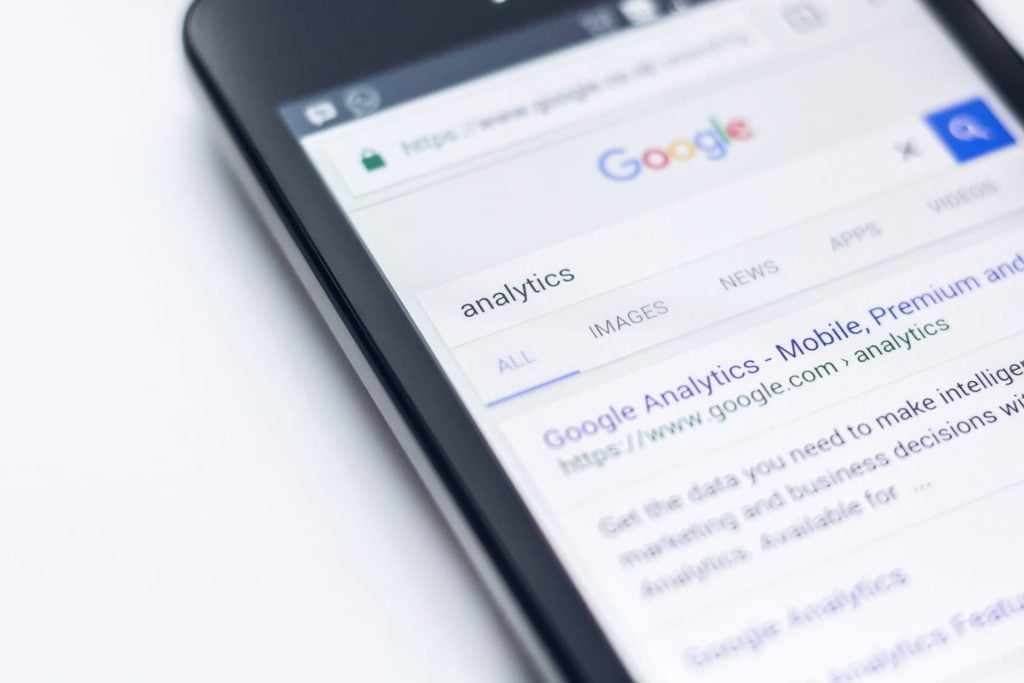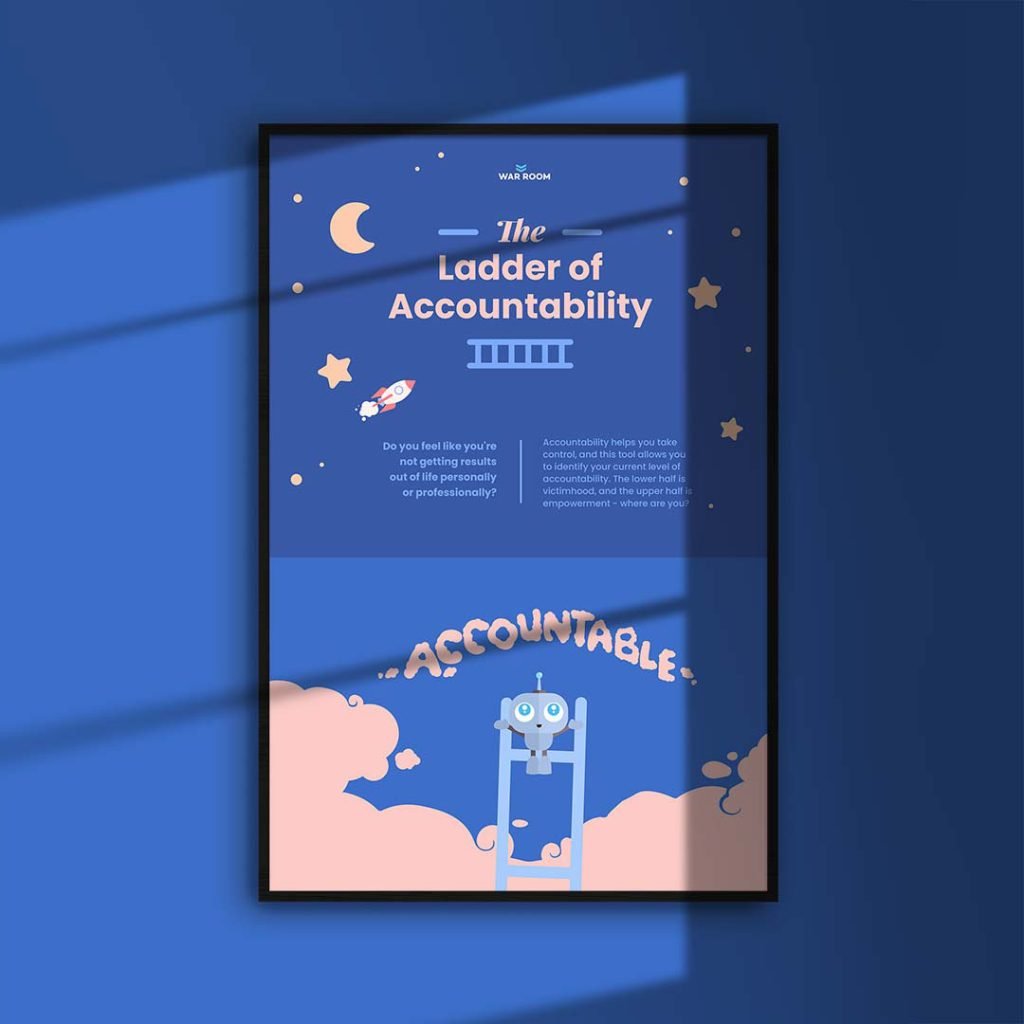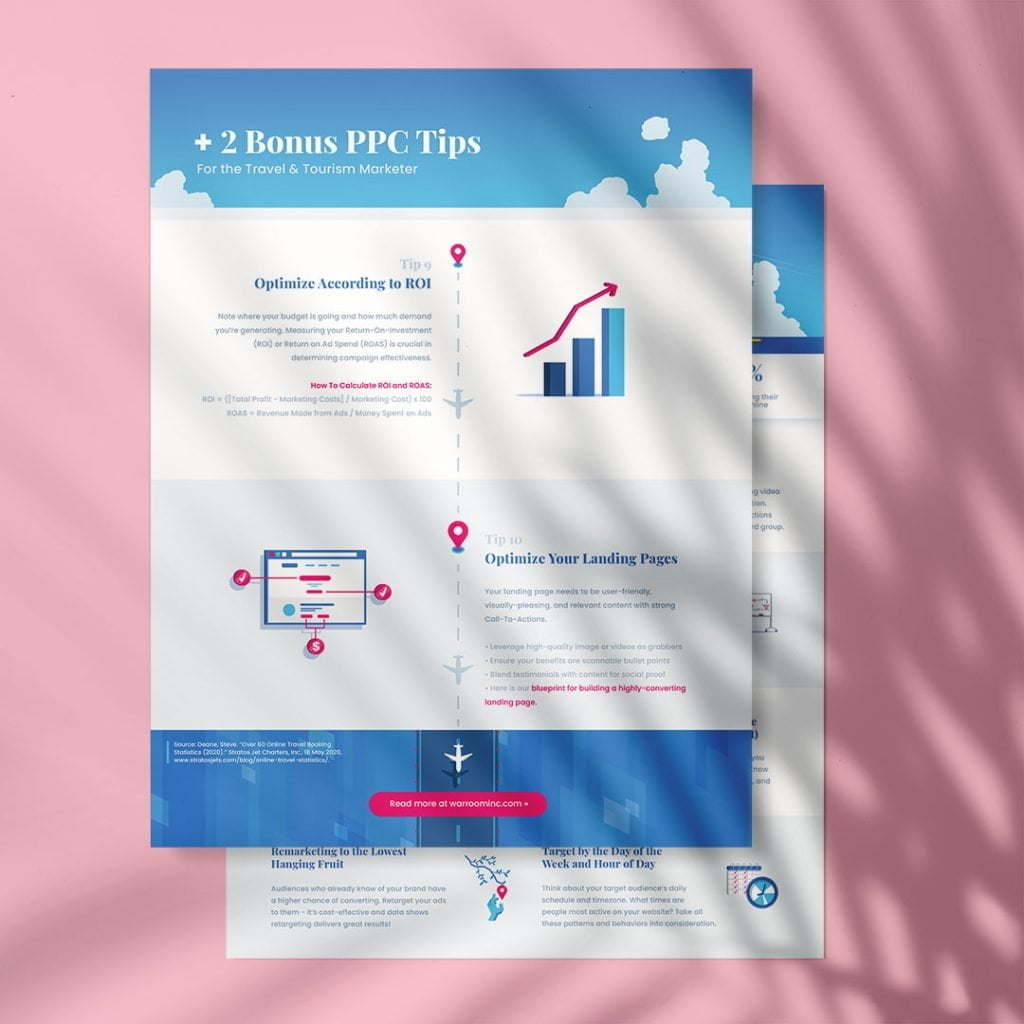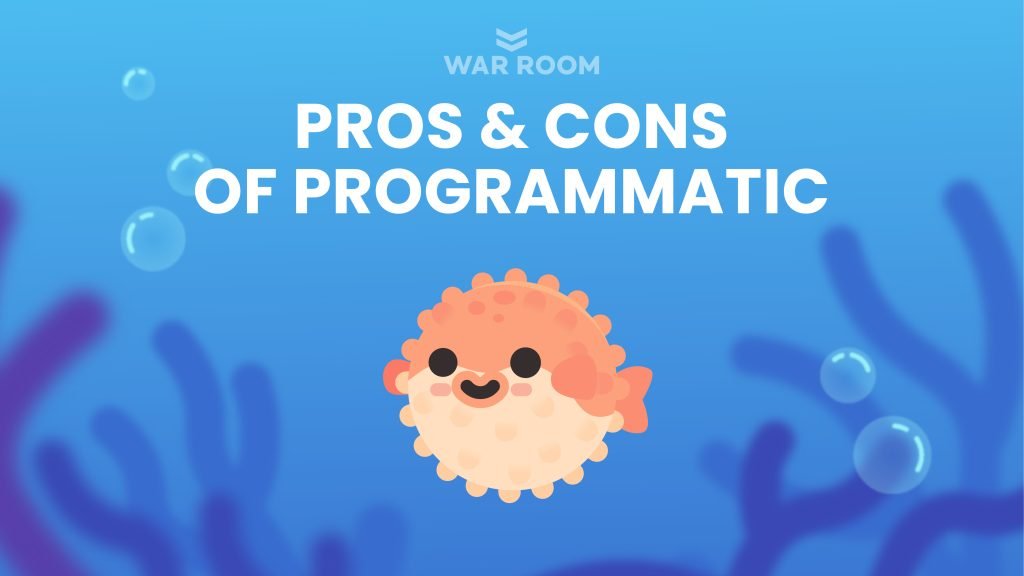Disadvantages of Programmatic Advertising (& How To Avoid Them)

Programmatic advertising companies do WHAT with your money? It can be daunting for brands when they first step into the bright and promising world of Adtech, Artificial Intelligence (AI), and machine learning. There are a lot of red flags you’ll want to avoid and make good budget decisions. There are many digital ad agencies that hide behind jargon, complex tech and bad practices that bank on brands not knowing these incredibly important aspects of the online ad business. As an agency that specializes 100% in programmatic and over a decade of experience in the industry, we’re here to spill the tea and discuss: The Disadvantages of Programmatic Advertising From fraud, to bots, to outrageous pricing structures – we will make sure that by the end of this post you know what to look for and expect from an honest, quality programmatic ad agency. You will learn about the ways unethical programmatic agencies operate, what problems you stand to face and how to avoid these risks in the future! Here are the topics we will cover: How The Adtech Industry Cashes In on Ignorance The Problems You Face With Programmatic Advertising Why Measurement isn’t Consistent at Some Agencies How Lack of Agency Transparency Costs You Money How a Lack of Third Party Visibility Harms Your Ad Campaigns The Reality of Ad Fraud in the Industry Why Viewability of Ads is a Cause for Concern How Brand Safety Should Be Your Main Priority How to Choose an Ethical Digital Advertising Agency TL;DR – What Have We Learned Editor’s Note: Be sure to check out our comprehensive posts on programmatic: What is Programmatic Advertising?How Does Programmatic Advertising Work?9 Genius Programmatic Advertising ExamplesThe Pros & Cons of Programmatic Ad Buying How The Adtech Industry Cashes In on Ignorance You’ve probably heard a lot about the benefits of programmatic advertising. The media loves to seize anything with futuristic technology and turn it into the latest must-have. That’s why you see everyone from Fortune 500 brands to small mom and pop stores investing nearly all of their ad budgets into programmatic ads. And you know what – they don’t all suddenly experience transformative growth. There is one thing in particular, that unscrupulous ad agencies get away with. They do this daily and it’s a gross misuse of their client’s ad budgets. Worse still, if you don’t know what to look for, you would never even know it’s happening, which we’ll tell you more about it a little later in the post. First, there are 3 things you need to agree with before we continue. Doing business with any Demand Side Platform (DSP) or agency without proper orientation on good practices and what they look like is a bad idea. Programmatic advertising is based on new technology, so yeah – there are going to be adjustment issues. Some companies factor this in for their clients’ benefit; other companies exploit the knowledge gap for financial gain. It’s best to know who is who. Technology is only as good as the team managing it. You can have the most advanced platform in the world, but if you can’t trust your ad team, you’re not going to maximize your ad campaigns’ potential. As a player in the industry, we don’t like to see other programmatic advertising companies cashing in on the ignorance of brand marketing teams. Let’s take a look at the disadvantages of programmatic advertising and get to the core of what makes a healthy, successful ad partner relationship work and negate these risks for your brand! The Problems You Face With Programmatic Advertising What if we told you that even the biggest, most successful ad agencies are guilty of not doing right by their clients? Martin Cass – CEO of MDC Media Partners and Assembly – did a talk on it a while ago, exposing Adtech as ‘the Wild West’ – a landscape brimming with problems. We believe the Wild West perfectly describes what the industry is currently experiencing. There are hordes of settlers, like your brand, looking for the promise of a better future. Programmatic advertising, AI, and machine learning is a new frontier – exciting but ultimately in its infancy. You have good guys and bad guys. Sheriffs and bandits. It makes sense. In this space, size and past reputation are no guarantee of smart, fair service. We all have guns now, and it’s a gunfight. People who get the raw deal are almost always the settlers, unfortunately. Not the bandits getting rich off robbing and exploiting others. Clients suffer most — which doesn’t sound like a sustainable business model. There’s no denying the landscape has irrevocably changed forever. Here you are, and where you’re likely to stay. But let’s not ignore the problems you’re facing. According to a survey, senior ad buyers have identified several key concerns that are happening right now in the Adtech industry. Among the most prevalent concerns are consistent measurement, agency transparency and viewability of ads. We’re going to address each of these disadvantages of programmatic advertising, one by one. Why Measurement isn’t Consistent at Some Agencies According to The State of Programmatic Advertising report, 49% of companies are struggling with inconsistent measurement and metrics in programmatic advertising. Advertising teams aren’t sure which metrics to measure Teams aren’t sure which metrics carry the most weight Getting fair Return on Investment (ROI) is easy which makes teams ignore optimization There is a high turnover of programmatic ad employees at most companies This is quite a revealing statistic considering measurement is why programmatic media buying is so popular and such a promising technology. Performance optimization is challenging in all marketing areas, but when you throw in proprietary technology that uses artificial intelligence and machine learning, things get complicated. Programmatic advertising companies spring to life purely because the demand for them is so high. The result, of course, is non-specialist teams working with technology they don’t really understand. Inconsistent measurement happens because: Measurement is a problem everywhere in marketing >right now. There is a well-known data scientist shortage, which means the industry lacks the
What are Search Ads?

Search Ads are one of the most popular types of advertising. Have you ever looked something up on Google and saw the top search results labeled “ad”? Those are precisely what Search Ads are. Brands invest in Paid Search Ads to ensure they show up in the results for high purchase intent audiences. When a consumer is actively searching for a specific product or service, their conversion intent is a lot higher, so it’s crucial to be in front of that audience segment. Search Ads are typically on search engines. This can be: Google Ads Microsoft Advertising (known as Bing Ads) Yahoo Search Ads Quora and more What are Search Ads? Search ads typically contain all text and no visuals, so it is a skill to craft compelling ad copy and entice people to click on your link. Keywords are crucial in paid search ad strategy. To capture the audience you want, you need first to select relevant keywords for your business. Search ads require attention to detail. It’s not just your keywords and creative ad copy that are needed. Other details include a list of negative keywords and appropriate extensions for specific ads. This consists of a Call-To-Action (CTA) for calling your business or directing them to click through to a landing page and fill out a form…whichever is your goal. Search campaigns can work for many different business objectives, taking detailed optimizations to create truly effective ads. Bonus: Learn more about Keyword Match Types in our blog: A Guide to Keyword Match Types What is Pay-Per-Click (PPC)? The next step in the search ad process is the entrance into an online auction with your competitors to bid for ad placement. As a business, you will set your ad budget, specifying the maximum amount you’re willing to pay when people click on your ad. That’s why it’s called Pay-Per-Click (PPC). Once your ads are created, it is assigned a Quality Score. The relevancy of your ad and keywords determine your Quality Score. The Quality Score determines your Cost-Per-Click (CPC). It is multiplied by your preset maximum bid budget, which ultimately determines your ad ranking in the auction. Quality Score is determined by many factors such as: Click-Through-Rate (CTR) Quality and relevancy of the keyword, ad group, landing page, and ad copy Your Google Ads account’s historical performance, etc So, the higher your Quality Score, the higher your ad ranks for, and the lower it costs. At War Room, we specialize in programmatic advertising. Programmatic Search Ads are the automated process of buying and selling ad space on Search Advertising platforms. Instead of requiring someone to adjust your ad budget and bids manually, it leverages artificial intelligence and machine learning to optimize your ad campaigns automatically! Bonus: Check out these two resources to enhance your Quality Score! Blueprint For Building a High-Converting Landing Page 170+ Power Words for Writing Emotional Ads Why You Should Be Running Search Ads If people are looking up a specific product or service in the search engine, they already have high purchase intent and are either doing research, price comparison or ready to convert. Search Ads are great for: Increasing website traffic Driving conversions (leads, sales etc) and more Perhaps these statistics below will convince you that Search Ads are worth the investment: 74% of brands say PPC ads are ahuge driver for their business 97% of consumers use the internetto search for local business 106.5% million dollars were spent on Search Adsby companies around the world in 2019 50% PPC visitors are 50% more likelyto make a purchase compared to organic visitors Why Choose War Room as Your Search Ad Partner Running PPC ad campaigns is an intricate process, so having an agency partner help you navigate and deliver results is invaluable. We are the experts in programmatic advertising, and Search Ads are quintessential of what we do for our clients. We combine our technology with our team’s expertise to deliver performance-driven ad campaigns. Here are some additional benefits of running PPC ads with us: Certified Partner We are experts in Paid Search. As a Premier Certified Google Partner, we deliver strong PPC campaigns that make the most of your ad budget. Our repertoire extends to Bing Ads, Yahoo, Quora, and more. This means more eyes on you! Cross-Channel Advertising We know that digital marketing strategies are multi-pronged and that you are most likely to have ads running on various channels. You will get to see exactly how your campaign performs, not just on the platform itself, but how it compares to the industry and how it is attributed cross-channel. Say for example, you have Instagram ads running at the same time as your Google Search Ads; we have the function to exclude those who saw your ad on Instagram and already converted, so you don’t have to waste more ad spend targeting them on Google. PS. Not a lot of agencies can offer this, but we can! Expert Management & Reporting You’re in good hands with our team of advertising experts. From strategy to the execution of your Search Ads, we got you covered. You can rely on our team and proprietary programmatic technology to proactively monitor your ad performance and make optimizations on the go. The War Room team will provide feedback if the opportunity arises on your ad creatives to ensure maximum potential and performance. After the completion of your campaign, our Data Analyst, Campaign Experts, and Account Manager will provide insight and recommendations for your future ads (how to continue and outpace your goals) and stand out from the crowd! As for reporting, we don’t send out automated reports from Google Ads. We consolidate all the measured data (sometimes cross channel) and input it into our beautifully branded reports that we’re famous for. Imagine data being told visually as a story. Our Account Manager will then walk you through it on an in-depth call, making the numbers easy to understand. Client Testimonial 600%increase in inquiries War Room really show you directly what ads and where those ads are being placed and where the returns are coming from… They
Negative Keywords of Wisdom

Does a bear defecate in the woods? Yes. Does someone walk into a dog shelter looking for cats? No. Cause’…that’d be a cat-astrophe. Meow, wouldn’t it help if a shelter worker told you that cats were excluded from their lineup, so that you could steer your search towards a place that did have cats? In terms of ad campaigns and pages, a negative keyword is that shelter worker that will help you find what you’re looking for, and not what you aren’t. Side note: Here at the War Room we LOVE cats (in fact, we’re one of the most pet-friendly offices in Vancouver). For example, we have an office cat named Bella. She’s great, and unapologetically steals sips of our smoothies when we’re not looking. When it comes to Search Ads, negative keywords can help you reach the most interested customers, reduce your costs, and increase your Return On Investment (ROI). With negative keywords, you can: Prevent your ad from showing to people searching for or visiting websites about things you don’t offer. Show your ads to people who are more likely to click them. Reduce costs by excluding keywords where you might be spending money but not getting a return. As a real world example, let’s say you work at a wine store and you sell wine glasses. You’d want to prevent your ad from showing to someone searching for or visiting webpages that contain terms like “sunglasses” and “eyeglasses,” since that person isn’t likely to buy those at your establishment. …Unless you’re preparing them for the morning after purchasing said wine. The right implementation of negative keywords helps to funnel viewers to your ad, helping to spend ad money in the right places to increase ROI, show your ads to people who are more likely to click-through and engage, and overall reach the most interested customers! Negative keyword searches can be done through your favourite campaign management system, Google Adwords. Through the keyword planning section, click the negative keyword tab on the bottom left corner of the screen. Here, you can find the key words to be excluded from your ad campaign that show data on search volume and competition to help steer viewers in your ad’s direction. If you’d like to steer viewers towards an ad for things you do offer, and away from those that you don’t – negative keywords are your go-to! Steering viewers towards what you do offer is only half the battle; steering them away from things you don’t offer is the other. Negative keywords are often useful for Paid Search campaigns that are a part of a broad field with a large spectrum of keywords, such as employment. Basically, negative keywords = funneled viewers which = higher conversion rates. Words of Wisdom: Don’t use too many negative keywords – you don’t want to steer away too many potential viewers, especially in broad fields Your ads can still show on pages that carry variations of the keywords selected. Say you add sunglasses as a negative keyword, you might have search terms like “red wine and sunglasses” and more show up. This reinforces the importance of careful selection when it comes to negative keywords, to be used sparingly. Generating Negative Keywords The old mentality behind negative keywords was for a bunch of marketers to dust off a few Red Bulls and let a massive brainstorming session begin, which often times looks like this: To save time and efficiently generate negative keywords, try using Wordstream’s services or Google Adwords’ broad match/phrase match options for a large spectrum of keywords. Again, Google Adwords search query report does offer set keywords for your ad group that you can choose selectively as “negative,” but the list is ideal for a few keywords at best. Paired with Google Analytics or other PPC metrics systems, you can determine what keywords have performed well, segmented by dates, times and more to maximize the effect of your negative keywords – without breaking the bank. And if all else fails, look at what the competition is doing in terms of keywords/negative keywords! Depending on the context of your ad or page, you can always refer to pre-set negative keyword lists to give you a better idea. In a nutshell – be wise about your negative keyword choices, but don’t miss out on an opportunity to engage the viewers that matter, and maximize the effectiveness of your PPC advertisement efforts!
The Ladder of Accountability

This Infographic Can Truly Empower You Do you ever feel powerless? The first step to empowerment is to have accountability for yourself. At War Room, The Ladder of Accountability is the foundation of our company culture, which allows us to embrace a culture of self-leadership. We know the tasks we are responsible for and also take ownership of the results. It encourages autonomy, problem-solving, collaborating and builds trust amongst the team. We work efficiently and well together because everyone holds each other and themselves accountable. It’s an excellent tool for any company to improve self-leadership amongst their team. We created this infographic as it is an excellent resource for encouraging anyone and everyone to hold themselves accountable, professionally and personally. It comes especially handy when you’re trying to achieve a goal or overcome a challenge. Find out some of its benefits below! How You Can Use It The infographic lets you identify which stage of accountability you’re at. There are a total of eight stages: The bottom four are “Victim Behaviors,” where you do nothing, complain or wait for a miracle — all of which aren’t productive or illicit change. The top four are “Accountable Behaviors,” where you are actively finding solutions and making things happen, in which there are limitless potential and hope. The goal for everyone is to get to the top of the ladder and control our own lives. Accountability is what holds a team together and makes it thrive. Imagine everyone coming together and making it to the top of the Accountability Ladder: that would deliver impactful results for the business. The same framework can be applied in your personal life, too: your relationships improve, your energy is fueled, and you’re ready to take on any challenge. Accountability makes life better, both at work and home. The Ladder of Accountability Download Now
PPC Tips for Travel & Tourism Marketers

These Tips Can Supercharge Your PPC Ad Campaign Strategy COVID-19 has significantly impacted the global tourism industry. As we navigate the pandemic to rebuild the “new normal”, one fact that doesn’t change is having a strong marketing strategy. Being prepared ahead of time helps you bounce back sooner! Pay-Per-Click (PPC) is the best way to capture those who dream of traveling again (trust us; almost everyone is craving a vacation). At War Room, many of our clients are in the travel and tourism industry, and we decided to share some first-hand insights and tips for effective PPC campaigns. The travel industry is competitive, so this resource will show you how to cut through the noise and capture your target audience. Why You Need It Tips For Optimizations Each PPC campaign is unique and requires finessing. Find out how you can optimize your campaign and landing page for better Return On Investment (ROI). Low-Hanging Fruit By learning how to identify the low-hanging fruit from your campaign, you can make the most cost-effective adjustments to drive quality conversions! Savvy Stats We highlight a few consumer statistics that travel and tourism professionals like yourself should keep in mind when building your strategy. 10 PPC Tips For Travel & Tourism Marketers Download Now
The Pros and Cons of Programmatic Ad Buying

Programmatic advertising delivers striking results. There is no comparison to traditional advertising anymore, which is why most of the industry invests in programmatic buying. But…what’s the catch? We’re going to talk about 3 advantages, and 3 disadvantages in clear, easy to understand terms. What are the pros and cons of programmatic ad buying? There are some clear cut benefits that you should know about when dealing with programmatic ad tech, and some poignant disadvantages too. This post is about the pros and cons of purchasing programmatic ads and why it’s become the single most popular method of ad trading online. Here’s the outline of this blog, feel free to scroll down or skip to the section you’re interested in: Programmatic Ad Buying Explained The Pros of Programmatic Advertising The Cons of Programmatic Advertising Programmatic Ad Buying Explained. So, what is programmatic advertising? To help explain the meaning, let’s look at some other definitions. Programmatic ad buying typically refers to the use of software to purchase digital advertising, as opposed to more traditional methods, that involve these processes: Request for proposal (RFPs) Human negotiations Manual insertion orders Basically – it’s using machines to buy ad inventory or space. Programmatic buying describes online display advertising that is aggregated, booked, analyzed, and optimized via demand side software. These Demand Side Platforms (DSPs) use technology to automate processes and they use math to improve results. Programmatic ads are pre-determined algorithms that are programmed to buy ads automatically for the advertiser. “So, it’s like real-time bidding?” Yes and no. Real-time bidding is a form of programmatic ad buying. Real-time bidding is when criteria are automatically matched in an auction-styled environment, and bids for that ad spot (a single impression) are placed. There are certain platforms that will allow you to buy the spot directly without having a bid auction with other marketers. In this case, the buying is still programmatic, but it is no longer real-time bidding. This type of deal is called programmatic direct. Anyway, onto the pros and cons! The Pros of Programmatic Advertising #1: Highly Efficient Before the days of programmatic ad buys, online spots were bought by humans. They would sit at their desk and call up other humans, and bargain and trade money for ad spots. This was slow, and unreliable. Nowadays, algorithms do this for them. It’s like that story where a man spent two weeks creating a program that turned his 40-hour week into a single click of a program – and he spent the rest of his 39 hours doing something else. Programmatic advertising is incredibly efficient. #2: Fast-Developing Technology Every day, the industry changes. It’s getting better, faster and smarter. From the overall structure of ad buys, to how specific targeting can get, to minimizing cost, and finding a better way of communicating with the right audience – programmatic media gets you there in a tenth of the time. Programmatic ads deliver striking results. There is no comparison to traditional advertising anymore, which is why most of the industry invests in programmatic buying at this point in time. How does the saying go? You can’t win the game if you don’t know the rules. Using this form of automated ad buying gives you the chance to find your winning formula, and to grow as the technology develops. #3: Outstanding Return on Investment (ROI) When the hard bits are automated, machines can keep chugging along until your goals are met or your budget runs out. Either way, you save time, maximize your ad spend and get a much higher return on your investment when you use programmatic ad buying. The Cons of Programmatic Advertising #1: Lack of Human Control One of the obvious concerns of ad automation lies with the human element of the process. That’s why different ad agencies produce different results. It takes highly skilled, highly trained programmatic ad professionals to launch, manage and execute successful campaigns. If an agency has bad practices, or inexperienced staff – there could be a host of issues for the advertiser. Ads appearing on low-quality inventory, wasted viewability – or worse – a campaign that succeeds, but doesn’t do it to its highest potential. How would an advertiser know that their money is being wisely spent then? The right team is everything in programmatic advertising. Do you need a marketing agency or advertising agency? #2: Online Traffic Fraud When advertisers pay for views, the general consensus among business parties is that these views should be real views. But many of these views come from bots, and bots aren’t real at all. Some companies create bots that watch videos over and over again. Then, they say, “Hey! Your video got 3000 views. That’s $100.00!” The problem here, is that you aren’t paying for empty views, you’re paying to influence real consumers. Bots don’t buy things. Thankfully, most respectable companies have ways around this these days. #3: Inappropriate Ad Matching A risk of paying for low-quality inventory is that sometimes your ad ends up being next to content, or on a website, you don’t want your brand anywhere near. For example, flight commercials on a news page about an airplane crash are in bad taste and wouldn’t get any conversions. Similar to the online fraud situation, most companies offer something called Brand Safety that helps prevent things like this. Disadvantages of programmatic ads (& how to avoid them)
War Room’s 10 Most Read Blogs in 2020

2020 has been a year of uncertainty. At the end of each year, we like to reflect on what we did and what we’re grateful for. Here are some things we’re thankful for: Foster kittens in the office Growing together closer as a team Working on some awesome campaigns for our clients We’re also proud that we’ve been writing more blogs for the Advertising Institute again! Here’s a look back at War Room’s most-read articles in 2020: Our Top 10 Most-Read Blogs in 2020 We love that the list contains a mixture of educational content about programmatic advertising, marketing tips for COVID-19, and even one about our office culture! #1: The Pros & Cons of Programmatic Ad Buying What are the pros & cons of programmatic ad buying? Let us present you 3 advantages and 3 disadvantages explained in clear, straightforward terms. We want consumers to learn more about Programmatic advertising, both the good and the bad, so you can make an informed decision that works best for your business. #2: What is Programmatic Advertising? Marketers rejoice! This is our cornerstone blog. The question we get asked the most. What exactly is programmatic advertising? Expect easy-to-understand terms and examples in this blog perfect for beginners. #3: Holiday Marketing Tips for 2020 The holiday season in 2020 is not canceled, but moving more to an online, remote model. How do businesses’ navigate their marketing strategy during this pandemic? Here are 13 tips to win in holiday marketing. #4: Why War Room is One of the Most Pet-Friendly Offices in Vancouver War Room prides itself on being an incredibly pet-friendly office. Not only do we have office dogs, but we also foster kittens! Click for cuteness! #5: Will Google Removing Third-Party Cookies Impact My Business? When you first enter a website, whether on your desktop or mobile phone, you are almost always likely to be welcomed with a pop-up window asking for you to agree to the website’s use of cookies and link to their company’s Cookie Policy. #6: How Does Programmatic Advertising Work? Seriously – how does programmatic advertising work? This easy and comprehensive guide teaches you how programmatic ads work on the internet today. #7: What are RTB, Programmatic Direct and Private Marketplaces? What’s the difference between RTB, programmatic direct, and private marketplace advertising? Here’s what you need to know about these 3 ad types. #8: The Differences Between Youtube and Google Keywords What is the difference between Google vs. Youtube keywords, anyway? If you’re using the same keyword terms on both platforms, you need to read this. #9: What is Programmatic Video Advertising Need to understand programmatic video advertising better? Here’s a simple guide on what it is, vital, useful stats, and why it’s an excellent advertising strategy for brands to expand their audience reach! #10: How Covid-19 is Changing Marketing COVID-19 has thrown everyone for a loop. These are challenging times for marketers and consumers alike. The world is changing, and marketing is changing as well, so we wanted to share some insights and tips on how businesses can step back into marketing during a pandemic. This is Part 1 of the 3-part series. Honorable Mentions Aside from our blog, the Advertising Institute also produces additional resources in a variety of formats like infographics. Here are the top two most popular in 2020: Blueprint for a High-Converting Landing Page This infographic will help you build a user-friendly landing page that communicates effectively, and most importantly, has a high conversion rate. Download now! 170+ Power Words For Writing Emotional Ads Here are 170+ words you can start incorporating into your ad copy that can resonate with consumers emotionally to sell more–download today. Got any other topics or resources you’d like to see? Contact us today! We’re always reading the latest digital news to ensure we’re at the top of our game and are happy to create more educational content to add to our library. War Room’s Advertising Institute publishes new content every week. We share insights and tips in digital marketing with a focus on programmatic. You can subscribe to our weekly newsletter to get the latest content delivered to your inbox! Sign-up for a Newsletter
What is TikTok?

Hey social media, have you heard about that new kid on the block, TikTok?It’s the most downloaded app in 2020. How did it become so popular? Why did the U.S. president want to ban it? Let us take you on a deep dive into this insanely popular app! Here are the topics we will cover: What is TikTok How Does TikTok Work How TikTok Started & How It’s Going TikTok Statistics TikTok For Business TL;DR – What Have We Learned Photo by Franck on Unsplash What is TikTok TikTok is a video-based social media app that allows people to create, discover, and share short videos. It is available on iOS and Android. The app’s niche in its earlier stages on music-related video content (like karaoke), but it has evolved to a wide variety of video content, such as: Dance Challenges Tips Magic tricks Comedy and more The company mission of the video platform is: To inspire creativity and bring joy and we’re working on this mission by enabling our users to connect and express themselves authentically. The platform offers a home for creative expression where users can enjoy an eclectic range of immersive, genuine, and entertaining videos – from dance challenges to lip-syncing to DIY tutorials to historical parodies to internet memes. The layout is user-friendly and designed for seamless browsing. It focuses on making video creation, viewing, and sharing easy for the public, which is why it’s become such a hit. When you open the app, videos automatically start playing one by one, which is fun and entertaining to browse through. Because each video is typically 15 to 60 seconds, aka “bite-sized,” it’s easy to consume, and sometimes users end up watching random videos for hours — a prime example of how social media is addicting! The current top genres of video content on TikTok are: Performance (dancing, singing, musical instrument, etc.) Entertainment (comedy, challenges, sketches, etc.) Sports & Outdoors (fitness, workouts etc) Learning (educational content, tutorials, how-tos, etc.) Travel & Leisure Beauty & Style (make-up or hair tutorials, outfits, hauls, etc.) Food (cooking tutorial, recipe, etc.) How Does TikTok Work? TikTok videos can be created directly in the app or uploaded from a different program. If created natively on TikTok, each clip is 4 to 15 seconds long and can be strung into a more extended clip of 60 seconds in total. The time restraint does not apply to videos made elsewhere then uploaded onto TikTok. Like other social media platforms, you can follow other users, like, and comment on videos. The “Discover” newsfeed will have new content for you to browse through. You can also use the search bar or hashtags to find other videos. The app offers an abundance of functions for creating videos, such as: Slow-motion Time-lapse Fast forward Filters V.R. effects Green screen background Songs…etc Once a video is uploaded, users will have the option to share it on other networks like Messenger or WhatsApp. Many users like to crosspost videos on their Instagram accounts to maximize views and the opportunity to gain more followers. How TikTok Started & How It’s Going Now that we know more about what TikTok is and how it works, let’s look at how it came about. It originally started in North America as “musically.ly” and over the past few years evolved to the app we know it as today. When it was musical.ly, it was a karaoke app geared towards teens. In 2017, the Chinese company, ByteDance acquired it and migrated its users and existing content to TikTok. ByteDance also owns Douyin, which is the Chinese equivalent of TikTok. In 2019, it was already the third most-downloaded app around the world, gaining 500 million followers in its first year. Let’s say that 2020 has been an eventful year for TikTok! President Donald Trump wanted to ban the app over the concern that because a Chinese company owned it would threaten U.S’s data privacy, foreign policy, and national security. However, TikTok’s spokesperson had clarified by saying: TikTok is led by an American CEO, with hundreds of employees and key leaders across safety, security, product, and public policy here in the U.S. We have never provided user data to the Chinese government nor would we do so if asked. Many people were even looking for the “new” TikTok replacement if it happened during this uncertainty. We even wrote a blog on it! TikTok ended up persevering and is actually the most downloaded app in 2020. You can definitely say it is here to stay…for now! Video has consistently been the preferred type of media for content consumption. Snapchat, Instagram stories, and now TikTok, the trend is leaning towards bite-sized videos typically under 30 seconds. COVID-19 has made 2020 a strange and uncertain year, with stay-at-home orders, so TikTok was able to fill people’s need for exploration, creation, and connection. TikTok Statistics 90% of TikTok users use the app daily. In 2018, there were already more than 1 million TikTok videos viewed every single day. There is no doubt that the number is continuing to grow. By 2021, it is already forecasted that monthly active users on TikTok will exceed 1.2 billion users worldwide! 83% of TikTok users have posted a video. 92% of users watching video on mobile will share it with others. By 2022, online videos will make up more than 82% of all consumer internet traffic. Top 10 list of TikTok Creators in 2020 Top 10 Viral TikTok Videos of 2020 The App’s 2020 Pick of Brands & Campaigns That Inspired Them TikTok for Business Because Tiktok is completely video-based, it cannot feature advertising formats like static images, carousels etc, like Facebook or Instagram in the newsfeed. However, because the app is incredibly popular with millions of active monthly users, many business brands consider TikTok as a marketing channel to engage with their audience base. On the TikTok For Business’ website, their homepage slogan is: Don’t Make Ads. Make it interesting. Make a connection. Make a new trend. Make TikToks. The app currently offers different ways businesses can advertise on their platform:
